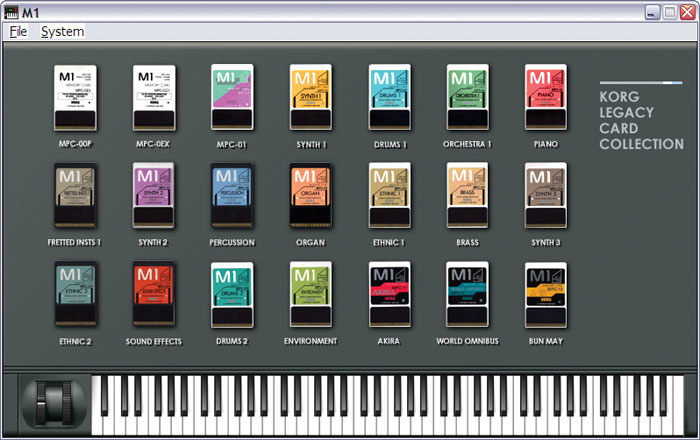

The digital oscillators are built around a specialized circuitry (based on ASIC), in charge of playing back samples stored in DRAM. The second one is built around a 63B03 processor, handling MIDI communication, keyboard management and control-voltage generation. The first one is built around an i8085 processor, in charge of floppy-disk management, user interface management (LCD and front panel), digital oscillator control. Two microprocessor boards are used to control the synthesizer. The DSS-1 architecture is quite complex, which explains the weight of the machine (19 kilograms). Oscillator sync in combination with autobend (on the slaved oscillator) allows the DSS-1 to emulate pulse-width modulation. Other features on the DSS-1 are: auto-bend (which allows for a pitch glide up or down to a destination pitch), oscillator sync (unusual for a sampler), and bit-crushing from 12 bits down to 6 bits. The DSS-1 has two 6-stage envelope generators (one for filter and one for amp). There are also two separate modulation sources for the built-in twin digital delays. There is one LFO for pitch and one for filter. Modulation sources include two individual triangle wave LFOs (which Korg calls "MG" for "modulation generator").
KORG LEGACY COLLECTION VST SERIES
The DSS-1, unlike the DW series or the Poly-800 allows the filter to be switched between 12dB and 24dB modes. The DSS-1 has the same VCF as on the Korg DW series and the Poly-800 (Korg custom filter # NJM-2069). These digital oscillators are then fed through a fully resonant VCF and a VCA section. This allows you to create single-cycle waveforms by either drawing them with a data slider, or by setting the relative amplitude levels of 128 sine waves. Also on board the DSS-1 is a simple, non-realtime additive synthesis engine.
KORG LEGACY COLLECTION VST FULL
For each oscillator, one of 16 single-cycle waveform loops or full samples can be selected. The subtractive analog engine on the DSS-1 allows for two oscillators to be combined and/or detuned. Like most digital-analog hybrid synthesizers, its architecture is set up much in the same way as on a standard subtractive analog synthesizer. A single DSS-1 floppy disk can hold up to 512k worth of multisamples, but only a max of 256K can be loaded into the machine's internal memory. The maximum internal sample memory is 256K on a factory standard unit, with some (now rare and hard-to-find) hardware upgrades that increased the memory up to 2MB. A single floppy disk can hold 4 "systems", each of which stores 32 patches including all subtractive synthesis parameters and the multisamples used in those patches. Multisamples can contain up to 16 individual samples. The usual sample editing features are included, such as truncate, loop, crossfade, keymapping, and so on. It can sample at 12-bit resolution, with a maximum sampling frequency of 48 kHz. The DSS-1 is a 12-bit sampler with analog filters and envelopes. The DSS-1 (along with the rackmount DSM-1) was the company's only sampler until 1998 when Korg introduced sampling options on their Triton and Trinity series of workstations, and on their Electribe series of drum-and-phrase samplers. Like Yamaha and Casio, however, Korg did not stay long in the sampling arena.

It came out at a time when many of the popular synthesizer companies were beginning to get into sampling, an area of sound design that had previously been left to a handful of fledgling companies such as Fairlight, E-mu, and Ensoniq. The Korg DSS-1 is a 12-bit polyphonic sampling synthesizer released in September 1986. Monotimbral but multitimbrality can be obtained using multisamples spread across keyboard


 0 kommentar(er)
0 kommentar(er)
